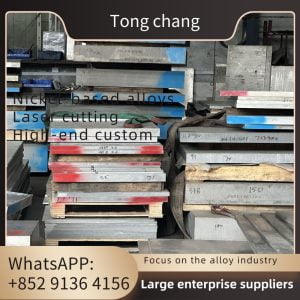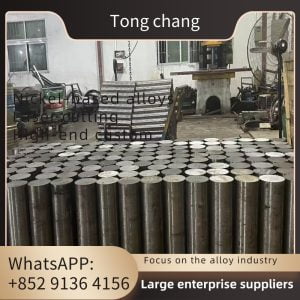| Standard: | ASTM A213/ASME SA213 | Material Grade: | TP321 / S32100 / SUS 321 |
|---|---|---|---|
| Third Party Inspection: | BV,SGS,ASP | Type: | Seamless/Welded |
| Surface: | Bright Annealed | Certificate: | ABS, GL, DNV, NK, PED, AD2000, GOST9941-81, CCS, ISO 9001-2008 |
| High Light: | astm a213 smls tube, amse sa213 tp321 smls tube, s32100 bright annealed tube | ||
A213 TP321 UNS S32100 BRIGHT ANNEALED STAINLESS STEEL SEAMLESS TUBE
Overview
TP321 is a stable stainless steel. Its main advantage is that it has excellent resistance to intergranular corrosion after exposure to the chromium carbide precipitation temperature range of 800 ° F to 1500 ° F (427 ° C to 816 ° C). The 321 stainless steel pipe can stably form chromium carbide by adding titanium.
321 stainless steel is a titanium stabilized version of 304 for specific applications within the sensitization temperature range. Its anti-sensitization ability and its high strength at high temperature make it suitable for applications where 304 will be sensitized or 304L thermal strength is insufficient. When exposed to a slightly corrosive environment, there will be no intergranular corrosion of weld corrosion. However, welding 321 must not be used in a highly oxidizing environment because it is vulnerable to "knife line" erosion. However, 321 is a better choice in the working temperature environment of more than 500 ° C, so it has its own advantages. 321 stainless steel pipe is also conducive to high-temperature use due to its good mechanical properties. 321 stainless steel has higher creep and stress fracture properties than alloy 304, especially alloy 304L can also be considered for sensitive and intergranular corrosion problems.
321 stainless steel is basically made of 304 stainless steel. The difference between them is that very little titanium is added. The real difference is their carbon content. The higher the carbon content, the greater the yield strength. 321 stainless steel has advantages in high-temperature environments due to its excellent mechanical properties. Compared to SS304, 321 stainless steel has better ductility and stress fracture resistance. In addition, 304L can also be used to resist sensitization and intergranular corrosion.
Chemical Composition
Mat. | C | Si | Mn | P | S | Cr | Ni | Ti |
|---|---|---|---|---|---|---|---|---|
| 321 | 0.08 | 1.00 | 2.00 | 0.045 | 0.030 | 17.0/19.0 | 9.0/12.0 | 5 X C Min – 0.70 Max |
Material Grade:
| American Standard | Austenitic Steel: TP304,TP304L,TP304H, TP304N, TP310S,TP316,TP316L,TP316Ti,TP316H, TP317,TP317L, TP321, TP321H,TP347, TP347H,904L… Duplex Steel : S32101,S32205,S31803,S32304,S32750, S32760 Others:TP405,TP409, TP410, TP430, TP439,… |
| Europen Standard | 1.4301,1.4307,1.4948,1.4541,1.4878,1.4550,1.4401,1.4404,1.4571,1.4438, 1.4841,1.4845,1.4539,1.4162, 1.4462, 1.4362, 1.4410, 1.4501 |
Size Range:
| Production | Outside Diameter | Wall Thickness |
| Heat Exchanger Tube | 6.00mm to 101.6mm | 0.5mm to 8mm |
Quality tests:
| Corrosion Test | Conducted only when specially requested by the client |
| Chemical Analysis | Test done as per required quality standards |
| Destructive / Mechanical Testing | Tensile | Hardness | Flattening | Flare | Flange |
| Reverse-bend and Re. flat tests | Carried out in full compliance with relevant standards & ASTM A-450 and A-530 norms, which ensures trouble-free expansion, welding & use at customers end |
| Eddy Current Testing | Done to detect homogeneities in subsurface by using Digital Flaw-mark Testing System |
| Hydrostatic Testing | 100% Hydrostatic Testing carried out according to ASTM-A 450 norms for checking tube leakage, and biggest pressure we can support 20Mpa/7s . |
| Air Under Pressure Test | To check any evidence of air leakage |
| Visual Inspection | After passivation, every single length of tubes & pipes is subjected to thorough visual inspection by trained staff for detecting surface flaws & other imperfections |
Supplementary Tests:
Apart from the above mentioned tests, we also carry out on the manufactured products supplementary testing.
|
|
|






